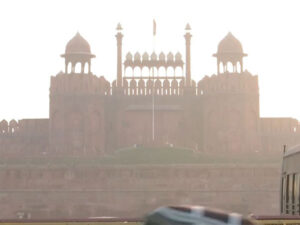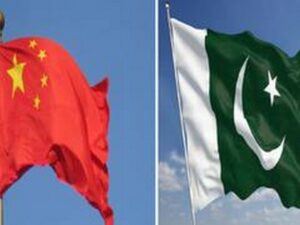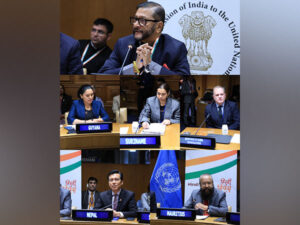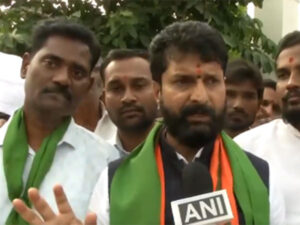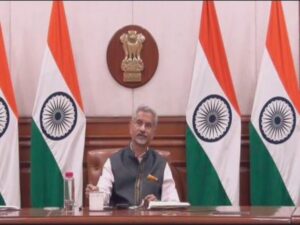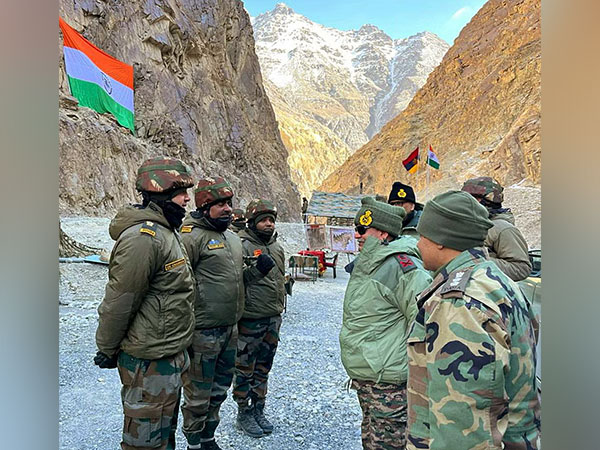
Galwan (Ladakh) [India], June 20 (ANI): China recently marked the third anniversary of the People’s Liberation Army‘s (PLA) skirmish with the Indian Army in the Galwan Valley. The Chinese state propaganda machinery, with the support of its jingoistic netizens on social media, portrayed the violent clashes that took place on June 15, 2020, as a tool for PLA’s troop recruitment from among the youth.
In the weeks leading up to the anniversary, Twitter accounts suspected to be connected to Chinese and Pakistani states were seen spreading graphic images and videos which sought to depict the Indian Army in a poor light and the PLA as the superior force.
On the one hand, the PLA seeks to portray its own performance in these intrusions across the Line of Actual Control (LAC) as an achievement that the Chinese youth should draw inspiration from and aspire to emulate by joining its ranks.
On the other hand, by specifically spreading false or exaggerated anti-India claims, the PLA seeks to gain the upper hand in the information and psychological domain. This would explain the leaking of photographs of injured Indian Army soldiers after the clashes and the divulging of their personal information such as regiment and service number on social media.
The use of hashtags such as ‘SouthernTibet’ to refer to the Indian state of Arunachal Pradesh is similarly aimed at creating the perception that China‘s claims on sovereign Indian territory are legal and grounded in history. These practices underscore the significance of factual accuracy and on-ground realities when it comes to the overall situation along the India-China border.
First of all, it has been established with near-total certainty, by multiple international news sources, that the PLA lost more than 40 of its troops in the Galwan Valley clash as opposed to India’s loss of 20 soldiers.
Secondly, in terms of parity in military capabilities, the PLA finds itself pitted against an unprecedented deployment of the Indian Army and Air Force with ever-greater levels of combat preparedness all along the contested border.
Thirdly, over the past three years, there has been increased focus and efforts by India to strengthen its border infrastructure along the Chinese border. The clash served as a wake-up call for India to bolster its defences and enhance its connectivity in the border regions. New Delhi initiated several key infrastructure projects, including the construction of roads, bridges, tunnels, and airstrips, with the aim of improving accessibility and connectivity to remote border areas. These projects are intended to facilitate easier troop movement, logistics, and overall border management, many of which are in advanced stages of development.
Additionally, India prioritized the development of advanced surveillance systems, deployment of unmanned aerial vehicles (UAVs), satellite imagery, and other modern technologies, to enhance monitoring and intelligence gathering along the border.
India also emphasised the importance of border infrastructure for the socio-economic development of the border regions. The improved infrastructure is expected to promote trade, tourism, and local development in these areas.
While China‘s edge in capabilities was achieved in the last two decades, thanks to its enhancements in border infrastructure, the brutal repression of ethnic autonomy in Tibet and Xinjiang regions and the overall expansion and modernisation of its military, there are a number of factors which threaten to upset this in the coming future.
India’s advantages over China in this strategic theatre of geopolitical competition have witnessed a quantum leap. Today, these advantages include geographical factors, military capabilities, and diplomatic considerations. The Himalayan terrain continues to favour India’s defensive posture and makes it harder for China to launch large offensives. Its relative harshness on the Indian side means that the Indian Army has trained harder to gain experience in mountain warfare and understands the terrain, the challenges of acclimatisation and operational tactics better than the PLA which has to rotate its troops out of high-altitude areas at a faster rate. India’s Air Force also has a stronger presence in the region owing to the Galwan Valley provocation, with forward air bases and air defence systems deployed at a high alert.
Presently, India enjoys far greater diplomatic support from various countries, in the context of its right to defend its borders against Chinese aggression. Several nations have expressed concerns about China‘s assertive behaviour and have openly shown solidarity with India. India’s strategic partnerships with Japan, Australia, and the United States, through initiatives like the Quad, have contributed greatly to counterbalancing China‘s power and influence in the Indo-Pacific region.
In economic terms, the widespread anti-China sentiments in India that grew after the PLA’s actions in Galwan, continue to fuel calls for boycotts of Chinese products and suspicious investments in sensitive industries.
Above all, there is a growing list of multinational corporations that are looking to shift their business and investments out of China to ‘not China‘ destinations, among which India figures as an extremely attractive choice.
Notwithstanding these changed realities on the border and in the world, China also faces perhaps a far more disturbing reality at home that has not changed much since the 2020 clashes. It is the disconnect between the Chinese Communist Party (CCP) and the PLA. President Xi Jinping has moved heaven and earth during his last two terms to make the PLA absolutely loyal to the CCP.
His many dismissals of top PLA generals and downsizing and restructuring of its organisations had betrayed quite early the likelihood that the military had veered intolerably far from the Party’s reach.
Secondly, Xi’s repeated emphasis on the PLA becoming a force which could ‘fight and win wars’ made it quite clear that the military was not seen as very competent even by the ruling elite. These two problems persist today as seen in Xi’s continued messaging to the PLA.
It would then suffice to say that the PLA faces a desperate need to convince both its domestic audiences and international challengers of its potency. And in the present circumstances, the mismatch between Chinese propaganda and realities on the India-China border is likely to grow and make the PLA’s narrative about the Galwan Valley clashes sound more and more hollow with each passing year. (ANI)







